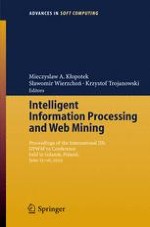The international conference Intelligent Information Processing and Web Mining IIS:IIPWM’05, organized in Gda?sk-Sobieszewo on 13–16th June, 2005, was a continuation of a long tradition of conferences on applications of Arti?cial Intelligence (AI) in Information Systems (IS), organized by the Institute of Computer Science of Polish Academy of Sciences in cooperation with other scienti?c and business institutions. The Institute itself is deeply engaged in research both in AI and IS and many scientists view it as a leading institution both in fundamental and - plied research in these areas in Poland. The originators of this conference series, Prof. M. D?browski and Dr. M. Michalewicz had in 1992 a long-term goal of bringing together scientists and industry of di?erent braches from Poland and abroad to achieve a creative synthesis. One can say that their dream has come to reality. Scientists from ?ve continents made their subm- sions to this conference. A brief look at the a?liations makes international cooperation visible. The research papers have either a motivation in c- crete applications or are o?-springs of some practical requests. This volume presents the best papers carefully chosen from a large set of submissions (about 45%). At this point we would like to express our thanks to the m- bers of Programme Committee for their excellent job. Also we are thankful to the organizers of the special sessions accompanying this conference: Jan Komorowski, Adam Przepiórkowski, Zbigniew W.
